Perception Issues
By Grom D. Matthies
It does not work. We can’t click on the Moon to Like/Dislike, retrieve further information about it or change its color. Selling a plot of lunar surface is or should be a crime, whilst howling at, dancing under or sacrificing something for our natural satellite is just a peculiar entertainment to spend time
So, is our natural satellite good for anything?
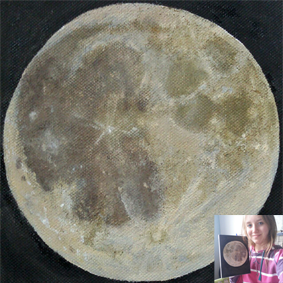
Painting in oil by Luna Steinbusch
A teenage member in my widespread patchwork family recently produced an oil painting of the Moon. This made me wonder, if picking up the paintbrush was an artistic way of spelling out her name, which translates to Moon, or inspiration induced by the mystery and awe towards the stars all healthy humans somehow share due to our physical connection with the stars.
Prehistoric hunters, homo sapiens or homo anything before that, certainly did use the time around full moon as a light source to surprise any sleepy soon to be tribal dinner. Primal societies, tribal or bigger, had a distinctively close relation with the Moon by considering and treating it as a deity.
The regularity of moon phases, easy observable and infallible, was perfectly suited to serve as a much needed reference for periods of time larger than a few days (month), yet shorter and of more practical use than the timespan between a recurring season (year).
As such, for most of its existence mankind kept a keen eye on the Moon, either out of fear, curiosity, awe, time for tax collection or other, but always deeply rooted in what our Moon provides naturally or through nature.
Awareness towards and usefulness of the Moon was steady throughout the ages and even grew and peaked by the sheer amount of people watching the moment someone sat a clean white boot on its dusty, gray surface.
This happened almost 50 years ago…and then?
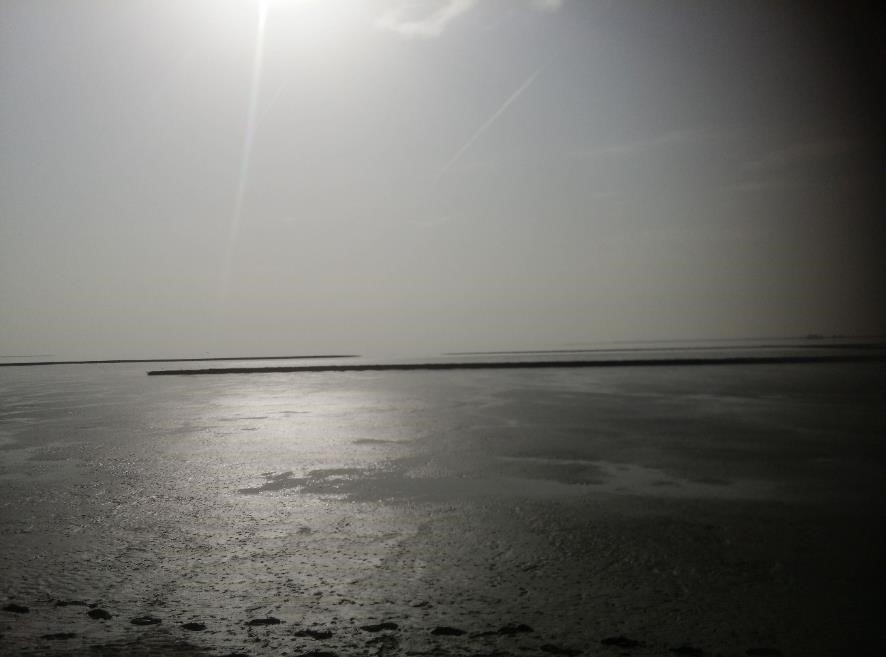
Tidal flats in Northern Germany…who took the water?
Image: Lara Holm
Recently I was overlooking a stretch of sandy, flat ground reaching up to the distant horizon. Twice a day this is normal ocean floor. A world heritage and attraction constantly visited by busloads of tourists. The cause for these receding waters, however, is often or even widely misunderstood by said tourists, though comprising mostly citizens from highly developed countries. Yet another family member pointed out, supported by actual conversations, that amongst certain tourists reigns a distinct tendency to believe local inhabitants affirming that the ocean waters are held back by a greedy neighboring country, rather than the Moon being responsible for such a drastic, recurring landscape change through gravitational pull.
A bit more recent, few days after full moon, I had a morning walk through a public park and passed a young woman with a girl child. In that very moment, the girl pointed towards the blue sky exclaiming: “Look, mommy, the Moon!”. With a clearly disbelieving tone, her mother replied that such is not…, just to abruptly cut her response as she apparently discovered a pale moon surrounded by clear blue sky. “Impossible. Something must…” was all I still caught from the young mothers’ voice. This was not a rare demonstration in lack of awareness. Whilst our modern, enlightened, educated and what not advanced society somehow assumes that the Moon is a sole thing of the night, every single Neanderthal very likely knew that the Moon may be visible at any given time of day. Understandably, the latter needed to know this for survival, a modern family does not.
Last year, I was being approached by a local neighbor, who knew about my work in astronomy. He asked “My son (age 16) learned that the Moon is hollow. Is that really true?”. “He learned what?” I had to ask back to regain some control over my thoughts, which apparently all went for a huge party in some part of my brain responsible for total disbelieve.
Expressively thankful for asking first, rather than him spreading a somehow well-refuted hypothesis, I skipped any attempt to squeeze a layman’s version on gravitational pull, mass, density distribution and other issues into a foreseeable two minutes timespan limit. Then our paths separated shortly after, I felt somehow less satisfied, knowing that for now this neighbor and his family had to rely on my word and not on being taught an easy to follow and reproducible explanation. While details about how things work may require some understanding in science, applying common sense and basic knowledge should be enough to prevent us all to fall for most of the conspiracy theories, alien abductions or similar scenarios.
Considering the enormous importance the Moon had, has and permanently will have on our existence on Earth (see other articles in this year’s GAM blog), we developed a serious level of ignorance. Unfortunately, not only towards the Moon. Just following the news about what is going on in this world, suggests, that mankind devolved into a pre-barbaric state, wrapped in a false sense of quality of life. We are equipped with enough knowledge and understanding to make life on this planet decent for every single person. But this knowledge does not get applied for our own and sure not for our collective wellbeing. This is a depressing thought.
There are many, and yet still a tiny minority, who are dedicated in teaching or spreading awareness towards our surrounding and how it works. GAM is a good time to find plenty of them, Some, like astronomers and alike, do teach about our planetary surrounding or the cosmos and some even spread awareness on how all and everything is connected.
Exploring this common connection and developing a critical mind on how nature works, may certainly start with our very own, very special companion in the sky. Tearing down borders rather than creating new ones is certainly of utmost importance. Not only those borders drawn on maps, but also those in our minds, to attenuate and hopefully eliminate all that unnecessary struggle for life, equality, acceptance or simple freedom.
|
Over four decades now, Grom D. Matthies writes, teaches, explores, thinks and much too often dreams about astronomy. He tries to promote awareness and scientific literacy in hope to inspire others to engage in a life that is sustainable for all.
|
 |
Moon Map for Children
By EuroPlanet
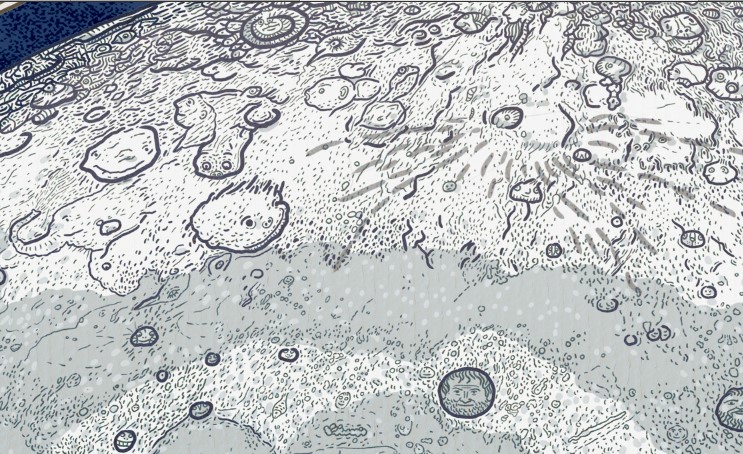
Our Moon has many different names. It's called Luna by the Romans, Selene and Artemis by the Greeks, and many other names in other mythologies. It has inspired poets as well as scientists. The most ancient formations of the lunar surface are the 4+ billion year old highlands, and the areas where the surface is so densely covered with craters, that a newly created one surely wipes away a few earlier craters. The large basins and the smallest craters were all scooped out by asteroids and space debris coming from the outer space and hitting the Moon. The “seas” (mare) are actually ancient lava plains, which filled up the earlier large impact basins with many layers of lava. The rocks on the lunar surface have been broken up, pulverised by “space dust” for billions of years, creating moon dust covering the entire surface. The ’face’ of the Moon has been unchanged for billions of years. It looked almost the same in the age of the dinosaurs, when the continents of the Earth had completely different shapes. The youngest formations are the light-rayed craters. There is no visible sign of water: even the meandering channels of the Moon were formed by volcanic lava.
Using the map designed for children, they will have an insight into the geography, environmental conditions, astrobiological potential and exploration opportunities of the Moon. The map of the Moon plays with craters and commemorative names: inside some of the selected craters, the person it is named for is shown. Some other craters have funny creatures inside. Visually, the map shows many minute details and is drawn in the style of pre-20th-century engravings. The visual design of the control panel uses the Apollo spacecraft’s control panels as a model. The map shows the mare-terra albedo distinction along with crater rays and also highlights the optically invisible basin outlines, which can only be seen in topographic maps.
Educational Activity Collection. The activity can be viewed and downloaded at: http://astroedu.iau.org/en/activities/1720/childrens-planetary-maps-the-moon/

|
Europlanet links research institutions and companies active in planetary research in Europe and around the world. Planetary science covers the study of our solar system and those around other stars. It is an interdisciplinary field of research that covers astronomy and geophysics, robotic and human exploration of other planets, as well as the search for extra-terrestrial life. More info: https://www.europlanet-eu.org/ Follow Europlanet on Facebook https://www.facebook.com/europlanetmedia/ and Twitter https://twitter.com/europlanetmedia
|
 |
The Hubble Space Telescope at 28
By Ricardo Reis
No, that’s not a mistake. The Hubble Space Telescope (HST) is turning 28 years old this month. Think about it. That’s a whole generation of people that never knew a world without a space telescope! They were born, grew up, graduated, some might have already married and had children – I’d even bet that some are actually working with Hubble data right now! And that’s the current lifespan of the most recognizable (and one of the most prolific) telescope in the world.
And the most amazing thing? For a telescope that started being planned in the 1960’s, and launched on the 24th of April 1990, it’s still able to produce cutting edge science, and of course, breathtaking images that look like real life paintings.
Why am I writing about Hubble? Because keeping up with tradition, HST just released new anniversary images. This time the target was a part of the Lagoon Nebulae, in visible and infrared, and the images don’t disappoint.
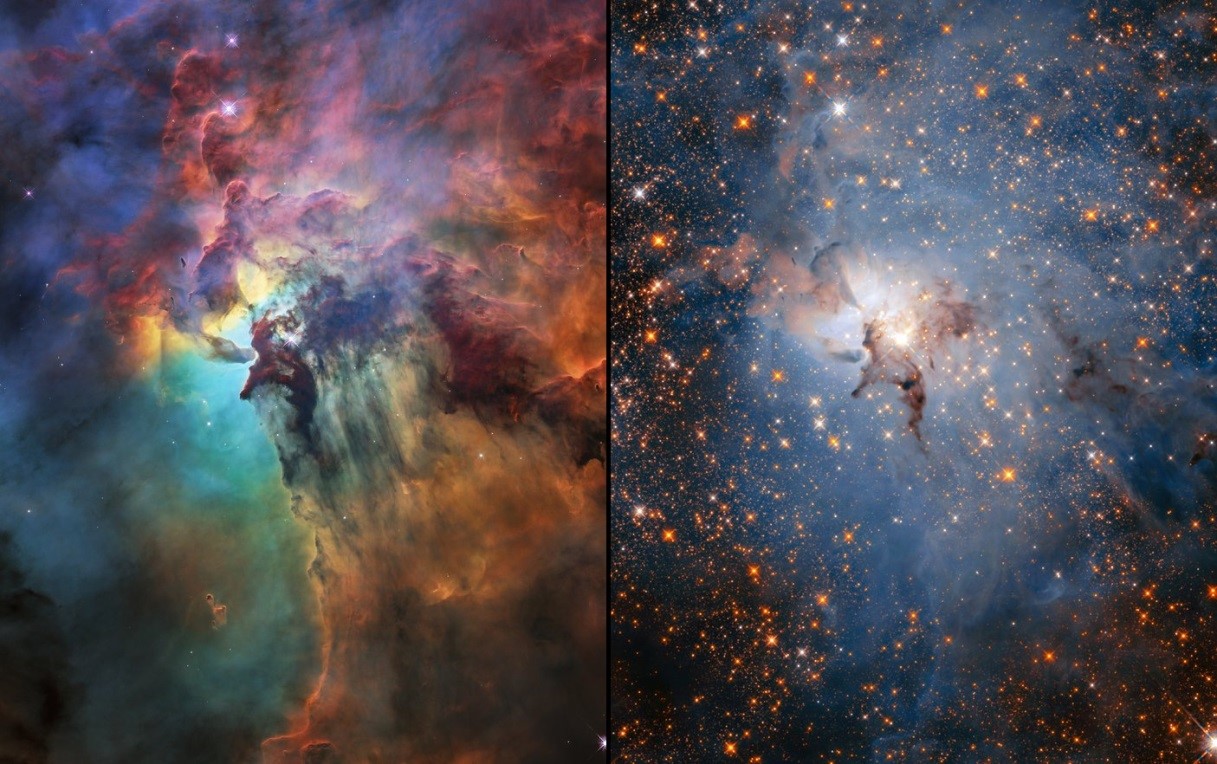
Visible (left) and infrared (right) images of a 4 light-years across part of the Lagoon Nebula. Some of the stars revealed in the IR image are young stars formed within the nebula. Credit: NASA, ESA, STScI
Three years ago, when the Porto Planetarium had just reopened after going digital, I was tasked to produce a fulldome planetarium show to celebrate Hubble’s 25th anniversary. It should feature a few of the most iconic Hubble images, so I immediately thought about past anniversary images.
But I soon realized that these wouldn’t be enough to showcase the richness of Hubble’s legacy. It observed the Solar System, Nebulae and Galaxies of all shapes and sizes, protoplanetary disks, exoplanets, galactic mergers, galaxy clusters with dark matter acting as a lens that shows even more distant galaxies, and of course, the Hubble Deep Fields.
You cannot talk about Hubble’s “greatest hits” without mentioning the deep fields. They are windows to the evolution of our Universe, looking further and further back to more than 13 billion years in the past, when our Universe was just a few hundred thousand years old.
The original Deep Field was produced in 1995, and revealed about 3000 galaxies. The latest was the Ultra Deep Field, originally produced in 2004, but revisited three times: Infrared data was added in 2009; a smaller portion dubbed the Extreme Deep Field added a further 5500 galaxies in 2012; Ultraviolet data, which shows the hottest, largest and youngest stars, was added in 2014.
The composite image below of infrared, visible and ultraviolet data was constructed over the course of 841 orbits, spanning 10 years, which summed up 25 days of observations. It contains over 10 thousand observed galaxies, including candidates to the furthest galaxy ever observed.

Ultraviolet Coverage of the Hubble Ultra Deep Field (UVUDF) project. Credit: NASA, ESA, H. Teplitz & M. Rafelski (IPAC/Caltech), A. Koekemoer (STScI), R. Windhorst (Arizona State U.) & Z. Levay (STScI)
However, the days of this joint NASA/ESA project are numbered. It’s already way past its original life expectancy, but it’s still holding on, waiting for its successor, the (recently delayed again) James Webb Space Telescope (JWST).
The JWST was originally planned to be launched in 2007, but its successive delays forced one last overhaul of Hubble in May of 2009. As of last month, JWST was again delayed, and is now planned to be launched in May 2020.
In 2021, at 31 years old, Hubble is expected to stop its science work. After that, the most likely scenario is that NASA will let it slowly fall towards the Earth, and when it’s too low, send a small rocket to couple with the decaying telescope, to crash safely in the middle of the ocean.
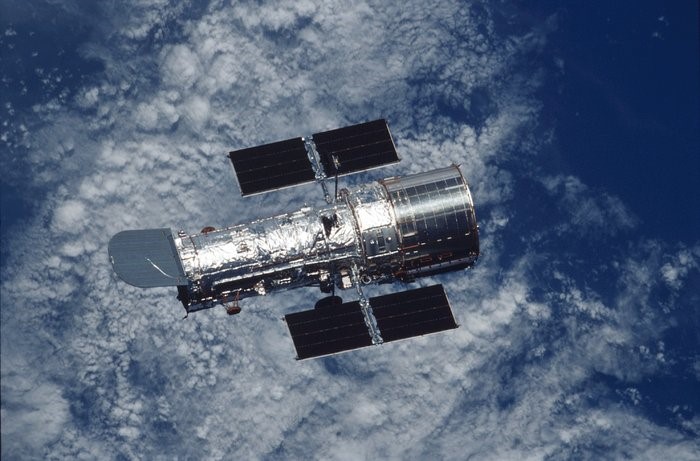
Hubble orbiting the Earth. The picture was taken by astronauts on board the space shuttle Columbia after the Servicing Mission 3B. Credit: NASA/ESA
|
Ricardo Cardoso Reis works as science outreach officer at Instituto de Astrofísica e Ciências do Espaço (IA) and as planetarium producer/presenter at Planetário do Porto – Centro Ciência Viva, in Portugal. Between 2010 and 2012 he was solar activities coordinator for Global Astronomy Month. During the International Year of Astronomy 2009 (IYA2009) he was a member of the International task group and Portuguese co-coordinator for 100 Hours of Astronomy (and co-coordinator of “Sun Day” activity) and Galilean Nights; and the International coordinator of Dawn of IYA2009, the first global event of IYA2009.
|
 |
Life on Earth and the Presence of the Moon
By Shaila Akhter
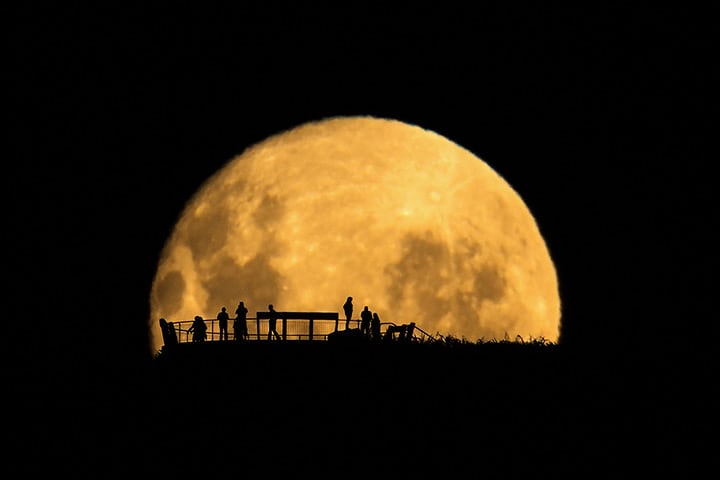
Credit: 'Moon silhouettes' by Mark Gee
The beauty of the Moon helps us to pass beautiful time on Earth, gave many poets and writers words for their creation, even from documentary to sci-fi, we have many movies on the Moon. Moon is the symbol of love as well, this is why we use the word “Honeymoon”! Shining like a beacon in its full size or just as a silver lining in a crescent form, the Moon is always there in our night sky. But, what would happen if there were no Moon for our very own planet, Earth?
• No Moon means no solar or lunar eclipses. There would be nothing to block the sunlight to our planet.
• Moon is the brightest object in the night sky. Without the Moon, the nights will be much darker. The next brightest object in the sky is the Venus, but that is not enough to light up the sky. If we compare, a full moon is 2000 times brighter than the Venus is.
• Tidal hides would change into about one-third of what they are now!
• Even a month relates to the motion of the Moon. So our calendars would be very different.
• The mass and the gravity of the Moon is helping to slow down our Earth's rotation. So, with no Moon, the Sun will take over and the Earth will spin faster, completing a day with only 6 to 7 hours, making a year with more than a 1000 days! This will lead to many unfavorable consequences. The wind and storms will increase much affecting the evolution of life on our planet making unpredictable development and loss of the plants and animals.
• Constituting around one-eightieth of the Earth-Moon mass system, the Moon stabilizes the Earth’s 23-degree tilt. This keeps our seasons and environments mild and suitable for our living. Without the Moon, the Earth begins to wobble more and more and tilting from almost zero degrees to more than 90 degrees. This wild and unstable fluctuating orbit of the Earth around the Sun will result in seeing the Sun for only a few minutes to years of continuous sunlight, followed by years of continuous darkness.
So, obviously without the Moon, the beauty of literature would be dimmed massively, there will be no twilight and even no movie to make based on this, where a man would turn into a werewolf, such as in the movie “Twilight”. But more importantly, the unfavorable seasons and environments would make almost all the living beings on Earth invisible. The Earth might contain some other lives for which these extreme conditions are favorable. So, next time you see the Moon in our night sky, remember to smile at it and admire the importance of it with our existence on this beautiful planet!
|
Shaila Akhter was born and grew up in Bangladesh. When she was a child, her father used to take her in his lap and every night he used to show her the night sky with lots of beautiful stars! Ever since she has always dreamt to be an Astrophysicist! After completing her honours and Masters in Applied Physics, Electronics and Communication Engineering from the University of Dhaka, Bangladesh, she pursued a Master of Engineering and an MPhil in Astrophysics from the Australian National University (ANU). Recently, Shaila completed her PhD in Astrophysics from the UNSW in collaboration with CSIRO Astronomy and Space Science in Australia and Astronomy department at the University of Sao Paulo, Brasil. Her research addressed how massive stars, that are eight to twenty times the mass of the sun, form in molecular clouds and their relationship with the Milky Way Galactic structure. |
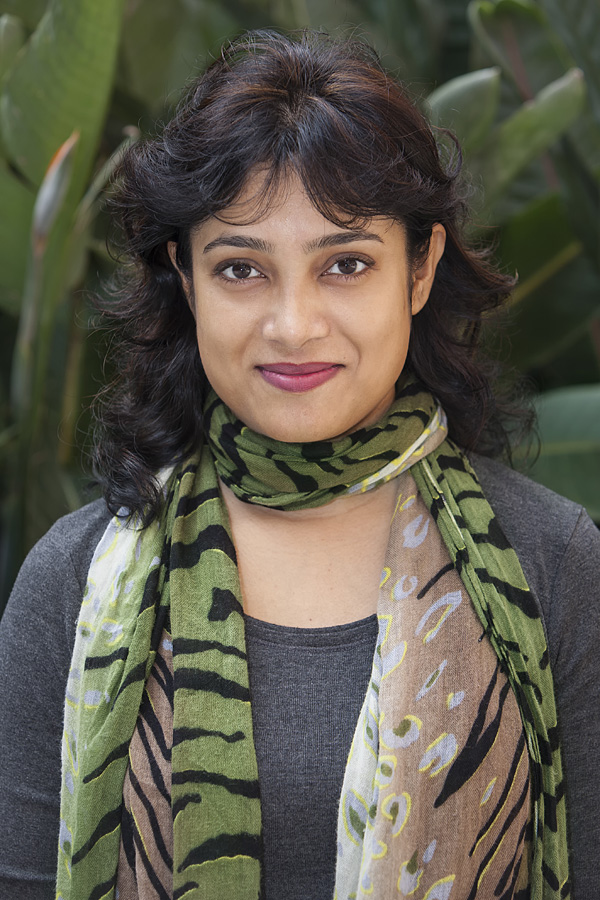 |
|
Beyond her research, she has been heavily involved in public outreach internationally. She was a monthly podcaster at the 365 days of Astronomy, CosmoQuest. She was a tutor and physics lab demonstrator for undergraduates and is a teaching assistant for Astronomy online courses at UNSW. She is now involved with PriyoAustralia.com.au online news daily as an Editor for Science section.
|
|
An Unforgettable Eclipse I’d Sometimes Like to Forget
By Rick Fienberg
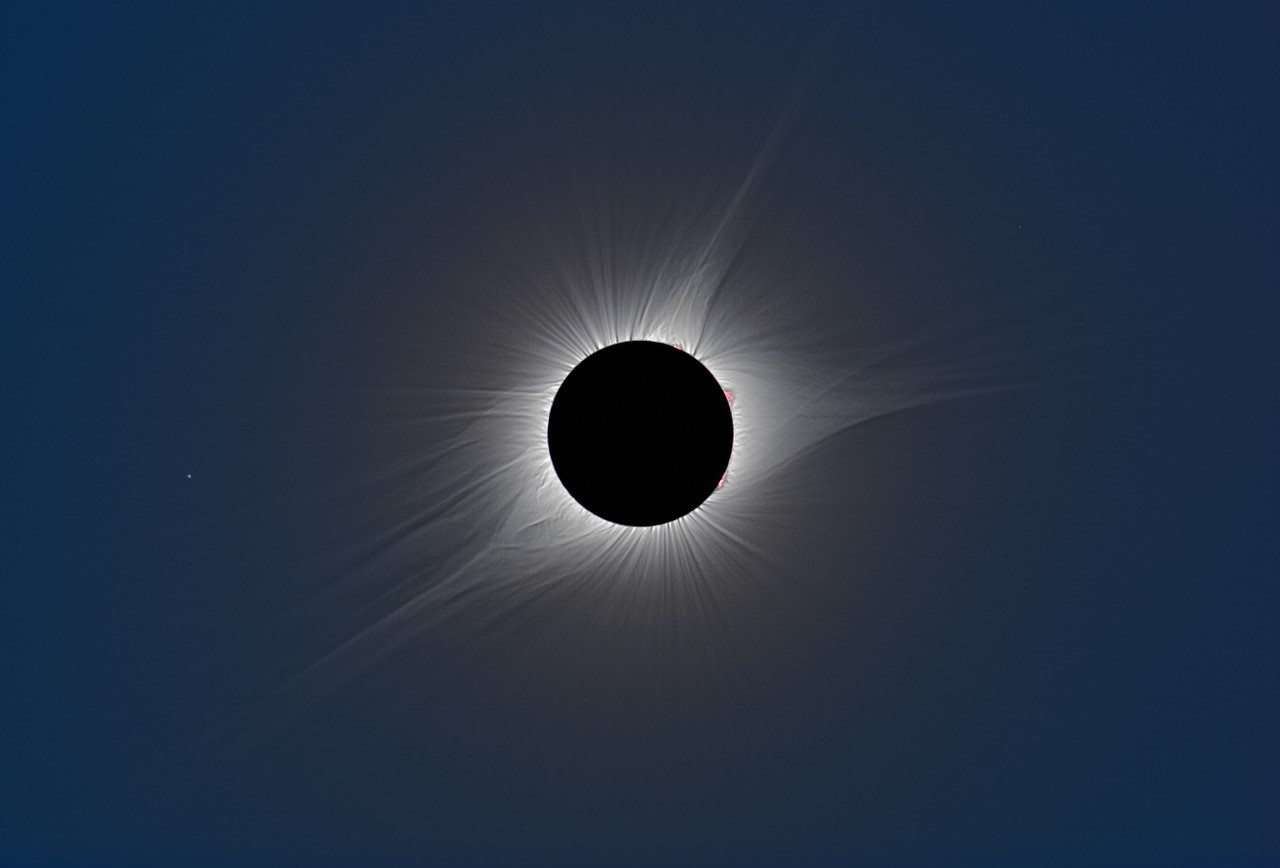
The total phase of the August 21, 2017, solar eclipse as seen from Madras, Oregon. This is a composite of short, medium, and long exposures, as no single exposure can capture the huge range of brightness exhibited by the solar corona. Credit: Rick Fienberg & TravelQuest International, with processing by Sean Walker of Sky & Telescope.
It’s been eight months since the “Great American Eclipse,” the first total solar eclipse to touch the U.S. mainland since 1979 and the first to stretch from coast to coast in nearly a century. I hope you were among the tens of millions — including me — who thrilled at the sight of the pearly white solar corona framing the jet-black lunar silhouette in a cerulean sky. Or perhaps you were one of the hundreds of millions who stood outside the narrow path of the Moon’s dark shadow and had only a partial eclipse. Either way, if you saw the Moon block the Sun last August 21st, you won’t soon forget the experience.
I won’t, though there are times I wish I could. The eclipse itself, which I watched from central Oregon, was one of the prettiest I’ve seen. But in the weeks leading up to the event I went through hell, and it was the eclipse’s fault.
Here’s what happened. I work for the American Astronomical Society (AAS), the major U.S.-based organization of professional astronomers. With the eclipse still years away, we created a task force to promote awareness of the event, to disseminate instructions for safe viewing, and to facilitate widespread distribution of solar-viewing glasses and filters. Our aim was to avoid a problem we’d seen in other countries at previous eclipses, where astronomers encouraged people to observe the Sun with proper precautions but doctors warned people to stay inside to avoid any risk of eye injury.
The AAS and NASA jointly developed safety messaging that won the endorsement of three major societies of professional ophthalmologists and optometrists. We based our advice on the ISO 12312-2 international safety standard for solar viewers, which was adopted in 2015, well in advance of what was predicted to be the most-observed solar eclipse in history. Our basic message was simple: Except during totality, look at the Sun only through viewers that are certified to meet the ISO 12312-2 standard. Among the AAS task-force members, I was the one principally responsible for promoting this message, which I did though our website (eclipse.aas.org) and through press releases, social-media posts, and media interviews.
So far, so good. But about a month before the eclipse, the marketplace was flooded with counterfeit eclipse glasses and solar viewers, most of them apparently imported from China and sold on Amazon.com. They claimed to meet the ISO 12312-2 standard, but there was no evidence backing that up, whereas vendors of legitimate products posted documentation from accredited testing labs. By the time Amazon started to properly vet their sellers, the damage was done: the public was confused about whether any solar filters were truly safe.
By this point I should have been packing my bags for Oregon and testing my automated eclipse-photography setup. Instead I was fielding a barrage of phone calls and emails from journalists and eclipse-event organizers desperate to make sense of the situation. I frantically compiled an online list of manufacturers and dealers selling genuinely ISO-compliant solar viewers and issued a press release about it. In the days leading up to August 21st, that web page got millions of hits, orders of magnitude more than the AAS has ever seen on any of its websites!
Fortunately, we’ve seen very few reports of eye injuries from the eclipse. On the plus side, this probably means that very few truly unsafe solar filters made it into people’s hands. On the minus side, it probably means that after hearing about the problems with eclipse glasses sold on Amazon.com, many people opted not to watch the eclipse at all out of concern that their solar viewers might be unsafe.
As it turned out, I managed to get my best eclipse photos ever last August 21st, even though I had to scramble at the last minute to get my gear in order. And I’ve been appointed to a committee charged with revising the ISO 12312-2 safety standard to make it more bulletproof against counterfeiters, so I’ll be able to make something good out of my miserable experience.
I have wonderful memories of my eclipse expedition to Oregon, and I look forward to the next major solar eclipses coming to the U.S. — an annular in October 2023 and a total in April 2024. Those aren’t so far away, but with any luck, by the time they get here I’ll have forgotten how crazy things got in August 2017!
|
Rick Fienberg is Press Officer of the American Astronomical Society, former Editor in Chief of Sky & Telescope magazine, and a veteran of 13 total solar eclipses.
|
 |





